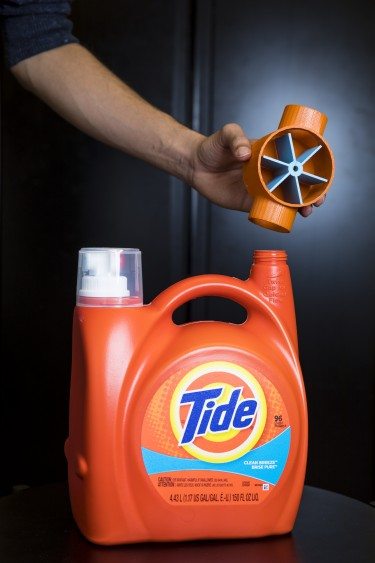Researchers developed a way to make 3D-printed objects collect data and pass information without the need for batteries or electronics.
A recent development in 3D printing technology could potentially make every item in our home a connected device. This was after a team of researchers from the University of Washington found a way to have 3D-printed objects connect to WiFi and transmit data.
The researchers demonstrated how the new technology works by using commercially available plastics and WiFi receivers. Vikram Iyer, an engineering graduate student at UW and co-lead author of the study, said:
“Our goal was to create something that just comes out of your 3D printer at home and can send useful information to other devices. But the big challenge is how do you communicate wirelessly with WiFi using only plastic? That’s something that no one has been able to do before.”
Iyer and his team’s research study was presented last November 30th at the Association for Computing Machinery’s SIGGRAPH Conference and Exhibition on Computer Graphics and Interactive Techniques Asia.
Researchers just found a way to connect plastic 3D-printed objects to #WiFiClick To TweetWiFi-Connected 3D-Printed Objects
For the researchers to create the WiFi-connected 3D-printed objects, they made use of backscatter techniques that enable devices to communicate and exchange information with each other. They replaced the electrical components in sensors with mechanical motion activated by parts like springs, gears, switches, and other components that can be 3D-printed. This technique was said to be based on the principles that allow battery-free watches to keep time.
The team then assembled the 3D-printed objects into a gear and attached an anemometer that measures wind speed to it. The backscatter systems then allow the transmission of data through WiFi. How?
Iyer and his team developed backscatter systems that use an antenna to transmit data by reflecting radio signals emitted by a WiFi router or other devices. Then, a WiFi receiver will decode the information embedded in those radio signals. The researchers employed an antenna that is contained in a 3D-printed object made of conductive printing filament that mixes plastic with copper.
Now, the system works when the gear spins and the teeth get connected to the antenna. The antenna then reflects ambient WiFi signals that will be decoded by the WiFi receiver. Apparently, the signal transmission is dependent on the speed of the wind. Meaning, the faster the wind makes the gear spin, the quicker the signals are being transmitted.
The researchers also added a button, a knob, and a slider which function like the typical ones used with smart devices. Using this technology, the researchers were able to develop two smart objects: a detergent bottle and a test tube holder.

The detergent bottle has an attached flowmeter that tracks the amount of remaining detergent while the test tube holder can measure the amount of liquid it holds.
“As you pour detergent out of a Tide bottle, for instance, the speed at which the gears are turning tells you how much soap is flowing out. The interaction between the 3-D printed switch and antenna wirelessly transmits that data,” Shyam Gollakota, senior author of the study, explained.
Aside from these smart objects, the team was also able to develop a way to print iron into the 3D-printed objects. It was said that this could be used to transmit information about the specific object.
“It looks like a regular 3D-printed object but there’s invisible information inside that can be read with your smartphone,” Justin Chan, co-lead author of the study, went on to say. The team’s research was funded by the National Science Foundation, Google, and the Alfred P. Sloan Fellowship.


















Comments (0)
Most Recent